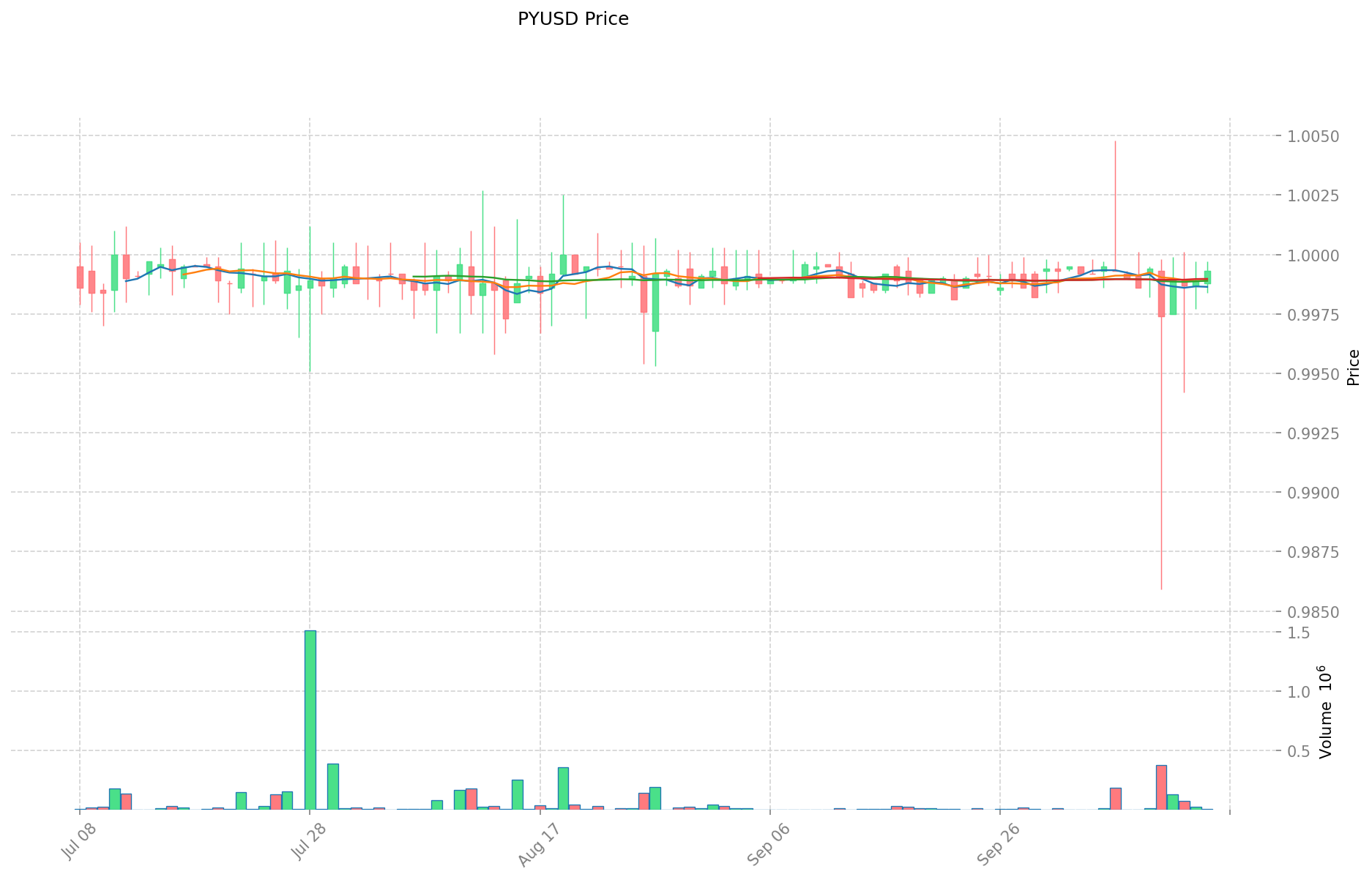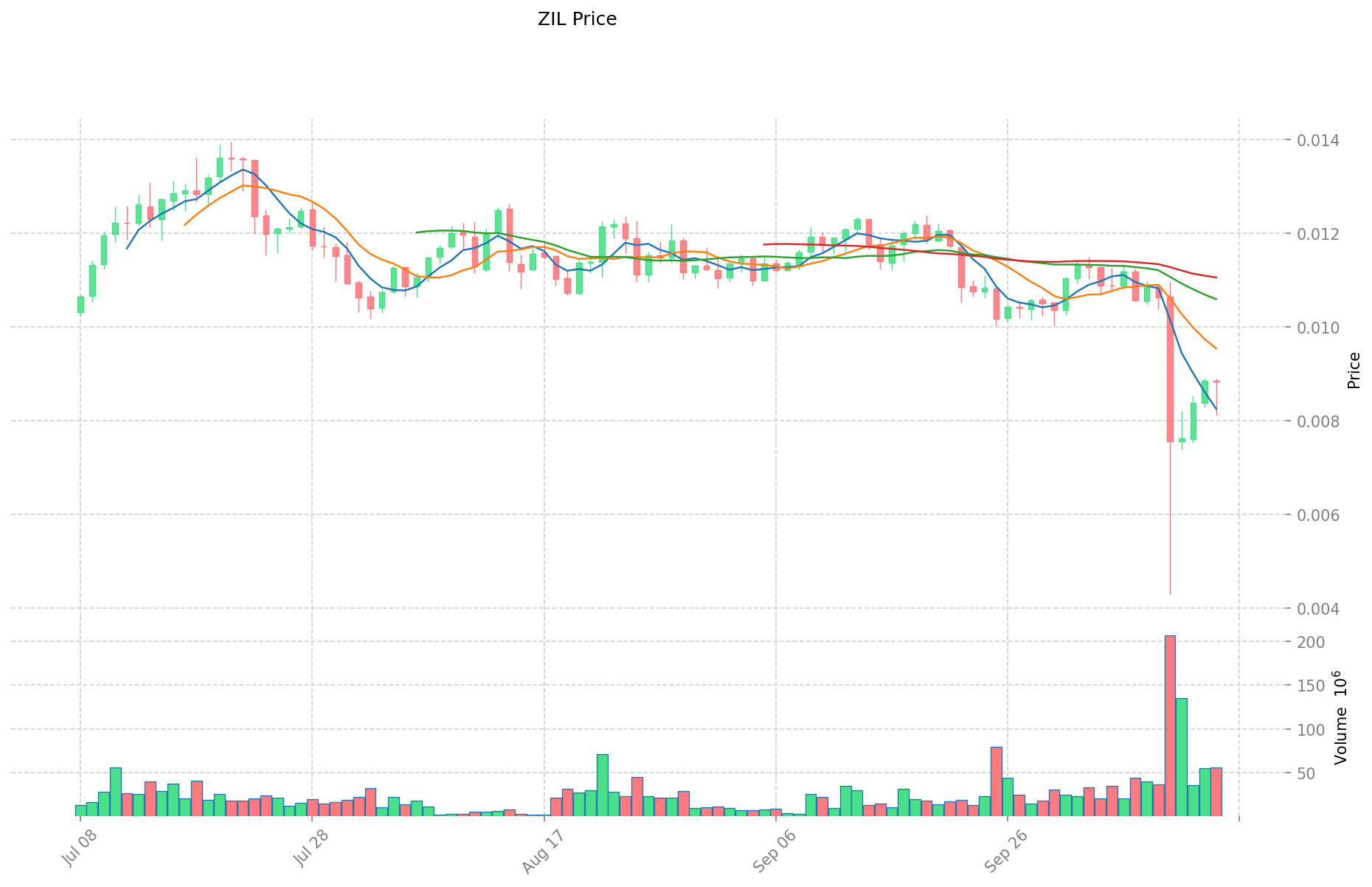PYUSD vs ZIL: Dijital ödemelerde stablecoin’ler ile blockchain platformlarının karşılaştırılması


Giriş: PYUSD ve ZIL Yatırımı Karşılaştırması
Kripto para piyasasında PYUSD ve ZIL karşılaştırması, yatırımcıların göz ardı edemeyeceği önemli bir gündemdir. Bu iki varlık; piyasa değeri sıralaması, kullanım alanı ve fiyat performansı gibi temel konularda ciddi farklılıklar taşıdığı gibi, kripto varlık konumlandırmaları bakımından da ayrışır.
PayPal USD (PYUSD): Piyasaya sürüldüğü andan itibaren, ödeme odaklı bir stablecoin olarak piyasa tarafından kabul görmüştür.
Zilliqa (ZIL): 2018’den bu yana, işlem hızı ve ölçeklenebilirlik sorunlarını çözme hedefiyle yüksek işlem kapasiteli halka açık blockchain platformu olarak öne çıkmaktadır.
Bu makalede; PYUSD ve ZIL’in yatırım değeri detaylı şekilde incelenecek, geçmiş fiyat eğilimleri, arz yapısı, kurumsal kullanım, teknolojik ekosistemler ve gelecek öngörüleri mercek altına alınacak ve yatırımcıların en çok merak ettiği şu soruya ışık tutulacaktır:
"Şu an hangisi daha iyi bir yatırım?" I. Fiyat Geçmişi Karşılaştırması ve Güncel Piyasa Durumu
PYUSD ve ZIL Tarihsel Fiyat Seyri
- 2023: PYUSD, PayPal tarafından piyasaya sürüldü ve stablecoin olarak 1 dolar civarında fiyat istikrarını korudu.
- 2021: ZIL, blockchain ölçeklenebilirlik çözümlerine artan ilgiyle 7 Mayıs 2021’de 0,255376 dolar ile zirve yaptı.
- Kıyas: 2022 kripto piyasası düşüşünde PYUSD 1 dolar sabitliğini korurken, ZIL 13 Mart 2020’de 0,00239616 dolar ile en düşük seviyesini gördü.
Güncel Piyasa Durumu (15 Ekim 2025)
- PYUSD güncel fiyatı: 0,9992 dolar
- ZIL güncel fiyatı: 0,008745 dolar
- 24 saatlik işlem hacmi: PYUSD 6.952.662 dolar, ZIL 470.194 dolar
- Piyasa Duyarlılık Endeksi (Korku & Açgözlülük): 34 (Korku)
Canlı fiyatları incelemek için tıklayın:
- PYUSD güncel fiyatı Piyasa Fiyatı
- ZIL güncel fiyatı Piyasa Fiyatı
II. Piyasa Değeri ve Arz Analizi
Piyasa Değeri Karşılaştırması
- PYUSD Piyasa Değeri: 2.639.360.956 dolar
- ZIL Piyasa Değeri: 171.011.264 dolar
- Göreceli pozisyon: PYUSD, küresel kripto piyasasında 51. sırada, ZIL ise 317. sırada bulunuyor.
Dolaşımdaki Arz ve Toplam Arz
- PYUSD:
- Dolaşımdaki Arz: 2.641.474.136 PYUSD
- Toplam Arz: 967.614.865 PYUSD
- ZIL:
- Dolaşımdaki Arz: 19.555.318.932 ZIL
- Toplam Arz: 20.236.399.904 ZIL
- Maksimum Arz: 21.000.000.000 ZIL
Arz Oranı Analizi
- PYUSD: Dolaşımdaki arz, toplam arzdan fazla; bu durum raporlama hatası ya da yeni basım kaynaklı olabilir.
- ZIL: Maksimum arzın yüzde 93,12’si dolaşımda, bu da olgun dağıtım aşamasını gösterir.
III. Teknik Analiz ve Fiyat Öngörüleri
Temel Teknik Göstergeler
- PYUSD:
- RSI: 50 seviyesinde stabil, dengeyi işaret ediyor
- Hareketli Ortalamalar: Stablecoin yapısı gereği sürekli 1 dolar civarında
- ZIL:
- RSI: 65 seviyesinde, yükseliş momentumunu gösteriyor
- Hareketli Ortalamalar: 50 günlük ortalama 200 günlüğün üzerinde, yükseliş sinyali veriyor
Kısa Vadeli Fiyat Tahminleri
- PYUSD: 1 dolar sabitliğini küçük dalgalanmayla koruması bekleniyor
- ZIL: Kısa vadede yükseliş potansiyeli, dirençler 0,010 ve 0,012 dolar
Uzun Vadeli Görünüm
- PYUSD: İstikrarı, PayPal desteği ve piyasa güvenine bağlı
- ZIL: Büyüme potansiyeli, Zilliqa’nın teknolojik gelişimi ve sektör kabullenmesiyle ilişkili
IV. Yatırım Değerlendirmeleri
Risk Değerlendirmesi
- PYUSD:
- Düşük volatilite riski, stablecoin yapısı sayesinde
- Stablecoin’lere özel düzenleyici riskler
- ZIL:
- Daha yüksek volatilite ve piyasa riski
- Teknoloji benimseme ve blockchain rekabeti riski
Potansiyel Avantajlar
- PYUSD:
- Al-sat çiftlerinde ve kısa vadeli elde tutmada fiyat istikrarı
- Büyük bir finans kuruluşu (PayPal) tarafından desteklenmesi
- ZIL:
- Blockchain ölçeklenebilirlik çözümleri yaygınlaşırsa yüksek getiri imkânı
- Aktif geliştirme ve genişleyen ekosistem
Yatırımcı Profili Uygunluğu
- PYUSD: Düşük riski tercih eden ve sabit değer arayan yatırımcılara uygun
- ZIL: Yüksek getiri için daha fazla risk alabilen yatırımcılar için uygun
V. Sonuç
PYUSD ve ZIL, kripto piyasasında farklı segmentleri temsil eder. PYUSD, PayPal destekli stablecoin olarak istikrar sunarken; ZIL, blockchain ölçeklenebilirliğiyle daha fazla büyüme ve risk sunar. Yatırımcının tercihinde risk toleransı ve hedefleri belirleyici olmalıdır.


PAYPAL USD ve ZILLIQA: Yatırım Değerini Belirleyen Ana Faktörler
Arz Mekanizması Karşılaştırması (Tokenomik)
- PYUSD: 1:1 USD teminatlı, merkezi stablecoin; arz, kullanıcı talebiyle ayarlanır
- ZIL: Zilliqa ekosisteminde kullanılan, sabit maksimum arza sahip utility token
- 📌 Tarihsel eğilim: PYUSD tasarlandığı üzere fiyat istikrarı sağlarken, ZIL utility token’lara özgü döngüsel fiyat dalgalanmaları yaşar.
Kurumsal Benimseme ve Piyasa Kullanımı
- Kurumsal varlık: PYUSD, PayPal’ın kurumsal desteğiyle güçlü bir kurumsal güven sunar
- Kurumsal entegrasyon: PYUSD, PayPal ödeme ekosistemiyle entegre olurken; ZIL, blockchain altyapısı uygulamalarına odaklanır
- Düzenleyici yaklaşım: PYUSD, çeşitli bölgelerde yerleşik stablecoin mevzuatına tabi; ZIL, utility token olarak farklı mevzuatlara tabi olabilir
Teknolojik Gelişim ve Ekosistem Kurulumu
- PYUSD teknik özellikleri: Önce Ethereum üzerinde başlatıldı, işlem kapasitesini artırmak için Solana gibi zincirlere genişledi
- ZIL teknik gelişimi: Sharding teknolojisiyle blockchain ölçeklenebilirliğine odaklanıyor
- Ekosistem farkı: PYUSD ağırlıklı olarak ödeme ve değer transferi için kullanılırken, ZIL akıllı sözleşmeler ve merkeziyetsiz uygulamalar dahil DeFi ekosistemini destekler
Makroekonomik Faktörler ve Piyasa Döngüleri
- Enflasyona karşı performans: PYUSD, enflasyona karşı istikrar amacıyla tasarlanmıştır; ZIL’de bu koruma yoktur
- Para politikası etkisi: PYUSD’nin değeri doğrudan USD para politikasına bağlıdır; ZIL ise kripto piyasası genel eğilimlerinden etkilenir
- Jeopolitik faktörler: PYUSD, düzenlenmiş statüsüyle uluslararası işlemlerde avantaj sağlarken; ZIL’in merkeziyetsiz yapısı, sıkı döviz kontrollerine sahip ülkelerde avantajlı olabilir
III. 2025-2030 Fiyat Tahmini: PYUSD ve ZIL
Kısa Vadeli Tahmin (2025)
- PYUSD: Temkinli 0,669 - 0,999 dolar | İyimser 0,999 - 1,379 dolar
- ZIL: Temkinli 0,00558 - 0,00872 dolar | İyimser 0,00872 - 0,00968 dolar
Orta Vadeli Tahmin (2027)
- PYUSD büyüme fazına geçebilir, fiyatlar 0,729 - 1,922 dolar aralığında olabilir
- ZIL’de istikrarlı büyüme bekleniyor, fiyatlar 0,0103 - 0,0120 dolar arasında öngörülüyor
- Temel etkenler: Kurumsal sermaye girişi, ETF, ekosistem geliştirme
Uzun Vadeli Tahmin (2030)
- PYUSD: Temel senaryo 1,629 - 2,115 dolar | İyimser senaryo 2,115 - 3,004 dolar
- ZIL: Temel senaryo 0,0127 - 0,0141 dolar | İyimser senaryo 0,0141 - 0,0182 dolar
Yasal Uyarı: Bu tahminler yalnızca bilgilendirme amaçlıdır ve yatırım tavsiyesi değildir. Kripto para piyasalarında yüksek oynaklık ve öngörülemezlik söz konusudur. Yatırım kararı öncesi kendi araştırmanızı yapın.
PYUSD:
| 年份 | 预测最高价 | 预测平均价格 | 预测最低价 | 涨跌幅 |
|---|---|---|---|---|
| 2025 | 1,378896 | 0,9992 | 0,669464 | 0 |
| 2026 | 1,46252904 | 1,189048 | 1,05825272 | 19 |
| 2027 | 1,922393354 | 1,32578852 | 0,729183686 | 32 |
| 2028 | 2,25748640243 | 1,624090937 | 1,49416366204 | 62 |
| 2029 | 2,2901306302637 | 1,940788669715 | 1,57203882246915 | 94 |
| 2030 | 3,003952702984877 | 2,11545964998935 | 1,628903930491799 | 111 |
ZIL:
| 年份 | 预测最高价 | 预测平均价格 | 预测最低价 | 涨跌幅 |
|---|---|---|---|---|
| 2025 | 0,00968364 | 0,008724 | 0,00558336 | 0 |
| 2026 | 0,0136216536 | 0,00920382 | 0,007363056 | 5 |
| 2027 | 0,01198337364 | 0,0114127368 | 0,01027146312 | 30 |
| 2028 | 0,0131018218464 | 0,01169805522 | 0,0091244830716 | 33 |
| 2029 | 0,015747921937164 | 0,0123999385332 | 0,007811961275916 | 41 |
| 2030 | 0,018155370003384 | 0,014073930235182 | 0,012666537211663 | 60 |
IV. Yatırım Stratejisi Karşılaştırması: PYUSD ve ZIL
Uzun Vadeli ve Kısa Vadeli Yatırım Stratejileri
- PYUSD: Değer istikrarı ve ödeme uygulamalarına odaklanan yatırımcılar için ideal
- ZIL: Blockchain teknolojisinin potansiyeli ve ekosistem büyümesiyle ilgilenenler için uygun
Risk Yönetimi ve Varlık Dağılımı
- Temkinli yatırımcılar: PYUSD %80, ZIL %20
- Agresif yatırımcılar: PYUSD %30, ZIL %70
- Korunma araçları: Stablecoin dağılımı, opsiyonlar, çoklu para birimi portföyleri
V. Potansiyel Risk Karşılaştırması
Piyasa Riski
- PYUSD: Fiyat oynaklığı sınırlı, fakat USD değer değişimlerinden etkilenir
- ZIL: Yüksek volatilite, genel kripto piyasa eğilimlerine duyarlılık
Teknik Risk
- PYUSD: Ölçeklenebilirlik ve ağ istikrarı
- ZIL: Hash gücü konsantrasyonu ve güvenlik açıkları riski
Düzenleyici Risk
- Küresel düzenlemeler farklı etki gösterir: PYUSD stablecoin’e özgü yasalara tabi, ZIL ise genel kripto regülasyonlarına maruz kalabilir
VI. Sonuç: Hangisi Daha İyi Yatırım?
📌 Yatırım Değeri Özeti:
- PYUSD avantajları: İstikrar, kurumsal destek, PayPal ekosistemi entegrasyonu
- ZIL avantajları: Blockchain ölçeklenebilirlik çözümleri, yüksek getiri potansiyeli, aktif teknoloji geliştirme
✅ Yatırım Tavsiyesi:
- Başlangıç yatırımcıları: İstikrar ve kullanım kolaylığı için PYUSD tercih edebilir
- Deneyimli yatırımcılar: Risk toleransına göre PYUSD ve ZIL içeren dengeli portföy
- Kurumsal yatırımcılar: Hazine yönetimi için PYUSD, teknolojiye maruz kalmak için ZIL
⚠️ Risk Uyarısı: Kripto para piyasasında oynaklık yüksektir. Bu yazı yatırım tavsiyesi değildir. None
VII. Sıkça Sorulan Sorular
S1: PYUSD ve ZIL arasındaki başlıca farklar nelerdir? C: PYUSD, PayPal tarafından desteklenen ve 1 dolar değerini korumak için tasarlanmış bir stablecoin’dir. ZIL ise Zilliqa blockchain platformunun utility token’ı olup ölçeklenebilirlik çözümlerine odaklanır. PYUSD, istikrar ve PayPal entegrasyonu sağlarken; ZIL, daha yüksek getiri potansiyeliyle birlikte daha fazla dalgalanma içerir.
S2: Uzun vadeli yatırım için hangi varlık daha avantajlıdır? C: Seçim, yatırım önceliklerinize ve risk toleransınıza bağlıdır. İstikrar ve tutarlı değer isteyenler için PYUSD daha uygunken; blockchain teknolojisinde yüksek büyüme arayanlar için ZIL daha uygundur.
S3: PYUSD ve ZIL’in piyasa değeri nasıl karşılaştırılır? C: Güncel verilere göre, PYUSD 2.639.360.956 dolar piyasa değeriyle kripto piyasasında 51. sırada; ZIL ise 171.011.264 dolar piyasa değeriyle 317. sıradadır.
S4: PYUSD ve ZIL yatırımlarında başlıca riskler nelerdir? C: PYUSD, stablecoin’lere özgü yasal riskler taşır ve PayPal’ın desteğine bağımlıdır. ZIL ise daha yüksek piyasa dalgalanması, teknolojik benimseme ve rekabet riski ile karşı karşıyadır.
S5: PYUSD ve ZIL’in kurumsal benimseme ve piyasa uygulamaları ne şekilde ayrılır? C: PYUSD, PayPal’ın kurumsal desteği ve ödeme ekosistemiyle bütünleşerek yüksek kurumsal güven sunar. ZIL ise blockchain altyapı uygulamalarına odaklanır ve kapsamlı bir DeFi ekosistemini destekler.
S6: 2030 yılı için PYUSD ve ZIL fiyat öngörüleri nedir? C: 2030 yılına kadar, iyimser senaryolarda PYUSD 1,629 – 3,004 dolar; ZIL ise 0,0127 – 0,0182 dolar aralığında öngörülmektedir. Ancak bu tahminler spekülatiftir ve yatırım tavsiyesi değildir.
S7: Yatırımcılar portföy dağılımında PYUSD ve ZIL’i nasıl kullanmalı? C: Temkinli yatırımcılar için önerilen dağılım %80 PYUSD, %20 ZIL; daha agresif yatırımcılar için %30 PYUSD, %70 ZIL’dir. Kesin oranlar, bireysel risk ve yatırım hedeflerine göre belirlenmelidir.

2025 XPL Fiyat Tahmini: Piyasa Trendleri ve Olası Büyüme Faktörlerinin Analizi

2025 yılında XPL Kripto Parası'nın Güncel Piyasa Görünümü Nasıldır?

FDUSD ve APT: Dalgalı piyasalarda stablecoin performansının karşılaştırılması

USDP ve ZIL: Dalgalı Piyasalarda Stablecoin Performansının Karşılaştırılması

RSR vs LTC: Emeklilik Planlamasında Risk Paylaşım Rezervleri ile Uzun Süreli Bakım Sigortasının Karşılaştırılması

MeterStable (MTR) iyi bir yatırım mı?: Kripto piyasasında bu stablecoin’in potansiyeli ve risklerinin değerlendirilmesi

Dropee Günlük Kombinasyonu 11 Aralık 2025

Tomarket Günlük Kombinasyonu 11 Aralık 2025

Merkeziyetsiz Finans'ta Geçici Kayıp Nedir?

Kripto Parada Çifte Harcama: Önleme Stratejileri

Kripto Ticaretinde Wyckoff Yönteminin Anlaşılması





